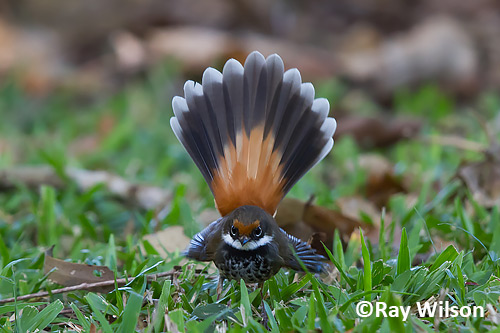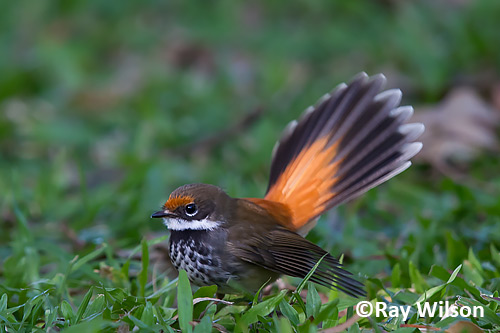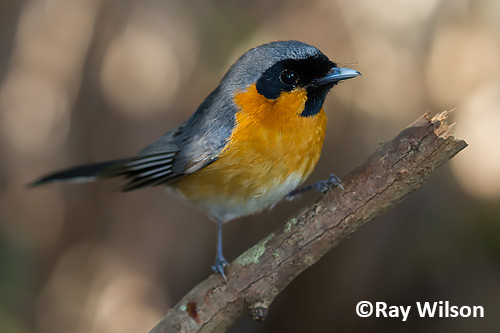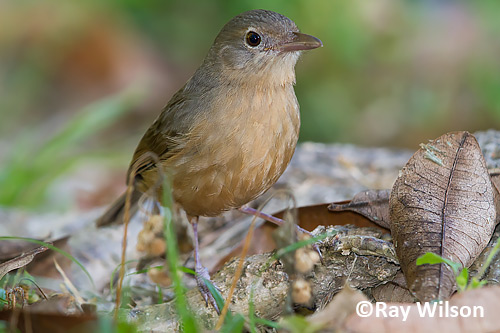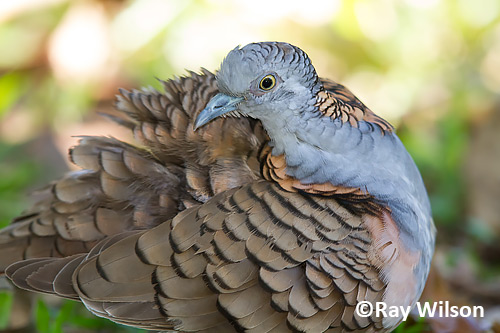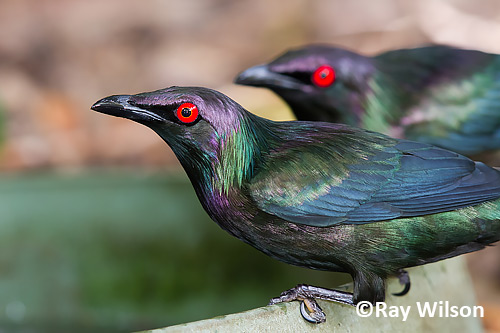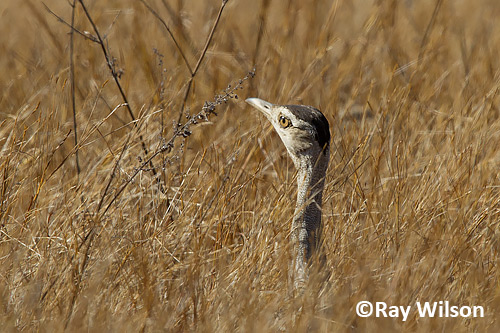
- Home
- Photography Tours
- Diary / Blog
- Galleries
- Foreign Trips
- Tasmania 2016
- NE Queensland 2016
- Western Alps 2016
- NE Spain 2016
- Australia's Wet Tropics 2015
- Australia's Top End 2015
- SW Australia 2015
- Switzerland 2015
- Andalucia 2015
- Belize 2015
- Australia 2014
- Switzerland 2014
- Belize 2014
- Bahama Islands 2014
- Switzerland 2013
- Ecuador 2012-2013
- Florida 2011-2012
- Vancouver Island 2011
- Australia 2010
- Peru 2008
- Bulgaria 2007
- Lesvos 2006
- California 2006
- New Zealand 2005
- Extremadura 2005
- Goa, India 2004
- The Gambia 2003
- About
August 2014
26th-30th August 2014
Julatten, Queensland, Australia
Part 2 : All other wildlife
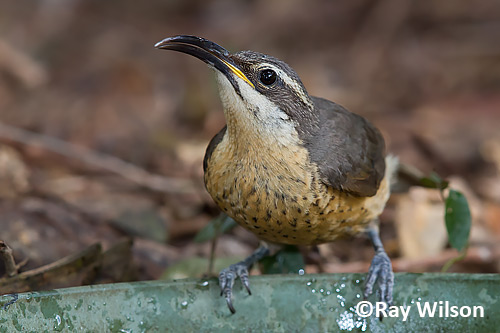
female / imm. male Victoria's Riflebird (Ptilorus victoriae)
Of course, not everything I saw was a honeyeater (see previous post) and there was an abundance of other birds in the rainforests, including a very obliging female-type Victoria's Riflebird. The males of this Bird-of-Paradise take 7 years to mature, so the majority of birds that you see look like females and males in their respendent breeding plumage are unfortunately few and far between.
Rufous Fantail (Rhipidura rufifrons)
Rufous Fantails are fairly common and are among my favourite birds. It is always a pleasure to watch these tiny balls of nervous energy constantly flicking their wings and fanning their tails in an attempt to disturb insects from the grass or foliage of trees. They are not the easiest of birds to photograph though, as you have to be quick and hope you have a fast enough shutter speed in the dark understorey to be able to freeze the action.
Rufous Fantail (Rhipidura rufifrons)
Pale-yellow Robins are common, and regularly land on a perch close to you, waiting for you to disturb insects for them to prey on.
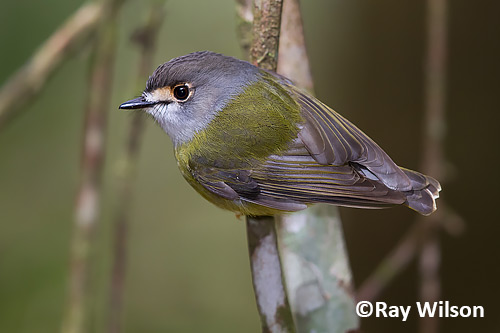
Pale-yellow Robin (Tregellasia capito nana)
It is a common characteristic of the Australasian Robins to perch clinging sideways-on to a vertical trunk.
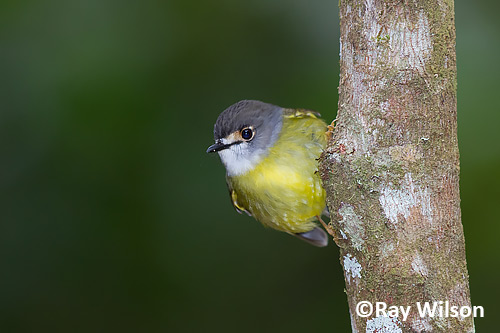
Pale-yellow Robin (Tregellasia capito nana
The much larger Grey-headed Robin has more terrestrial habits than most members of its family and are usually seen bouncing along the forest floor.
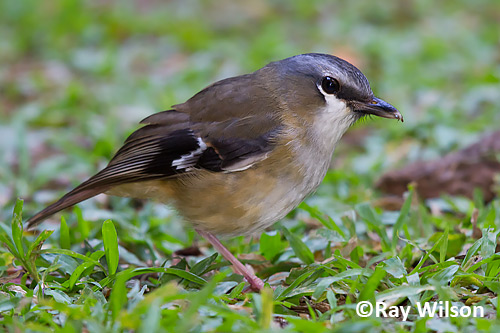
Grey-headed Robin (Heteromyias albispecularis)
Other species that could be found searching for invertebrates in the leaf litter on the forest floor included both Yellow-throated and Large-billed Scrubwrens.
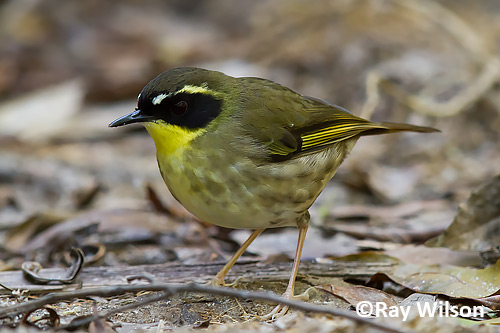
Yellow-throated Scrubwren (Sericornis citreogularis)
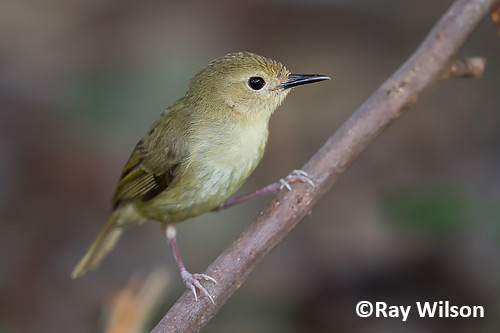
Large-billed Scrubwren (Sericornis magnirostris)
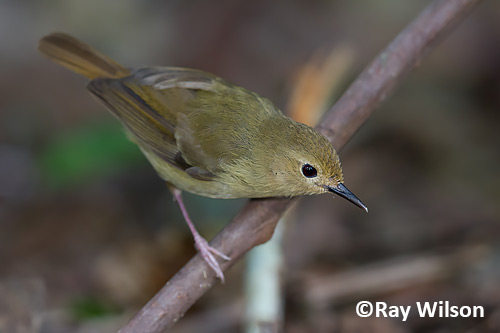
Large-billed Scrubwren (Sericornis magnirostris)
Spectacled Monarchs were common in the rainforests where they actively flitted around the branches searching for insects or making aerial sorties to catch them in the air.
Spectacled Monarch (Monarcha trivirgatus)
Both Bower's and Little Shrike-thrushes were also fairly common birds and were frequently seen hopping around in the undergrowth and low-levels of the forest.
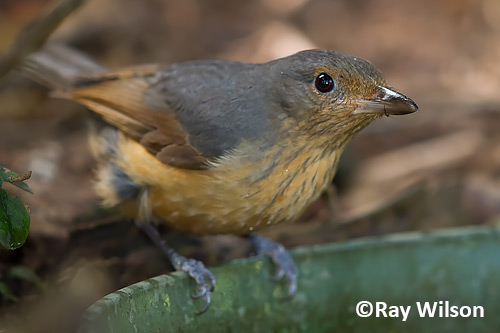
Bower's Shrike-thrush (Colluricincla boweri)
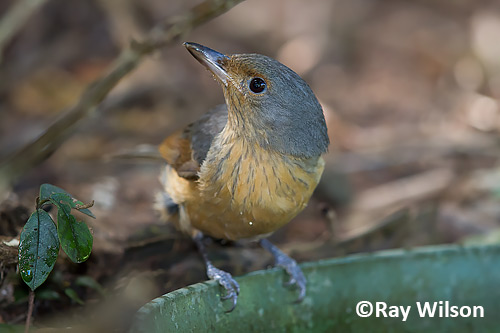
Bower's Shrike-thrush (Colluricincla boweri)
Little Shrike-thrush (Colluricincla megarhyncha)
Grey Shrike-thrush appeared to be a lot less common than it is further south and the bird below was the only one I saw.

Grey Shrike-thrush (Collurincincla harmonica)
Bar-shouldered Doves were, by far, the most common pigeon in the area and their distinctive calls could be heard more or less everywhere you went.
Bar-shoulded Dove (Geopelia humeralis)
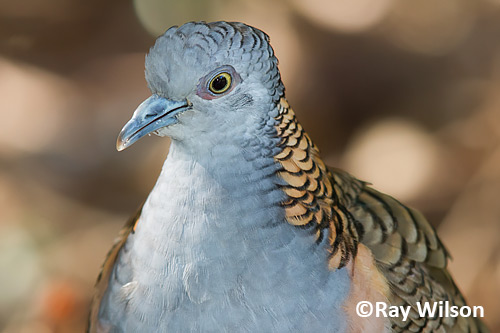
Bar-shoulded Dove (Geopelia humeralis)
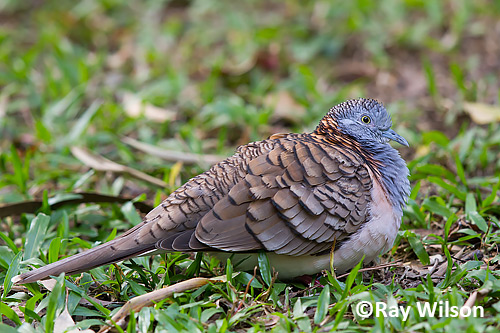
Bar-shoulded Dove (Geopelia humeralis)
Although I spent a considerable amount of time searching the known sites for Blue-faced Parrot-finch the only Estrildids I managed to see during my stay were the abundant Red-browed Firetails.
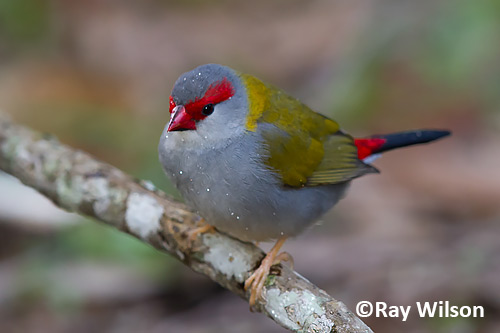
Red-browed Firetail (Neochmia temporalis)
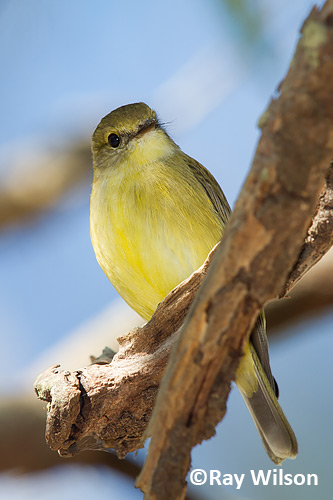
Lemon-bellied Flycatcher (Microeca flavigaster) |
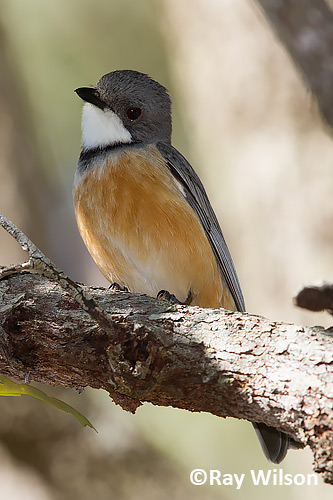
Rufous Whistler (Pachycephala rufiventris) |
Papuan Frogmouth is the largest of the three species of frogmouth that occur in Australia. It is a nocturnal bird who during the day sit motionless beside the trunk of a tree, relying on their cryptic plumage to keep them hidden. They often intensify their resemblence to a broken branch by stretching their neck and pointing thieir bills upwards whenever they perceive a potential threat, such as a wildlife photographer approaching their tree...
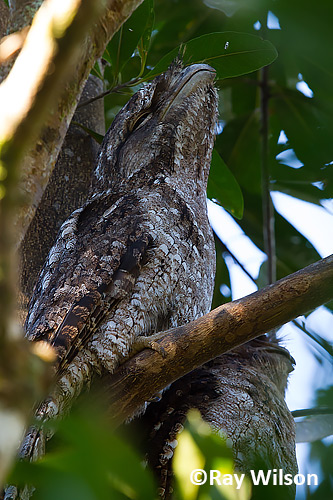
Papuan Frogmouth (Lichmera indistincta) |
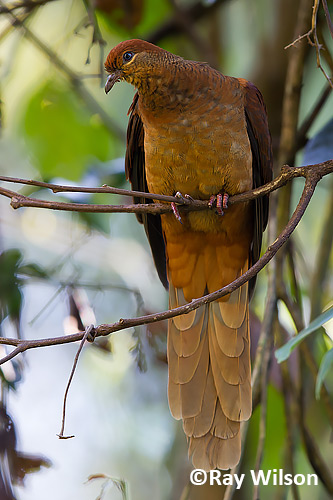
Brown Cuckoo-dove (Macropygia amboinensis) |
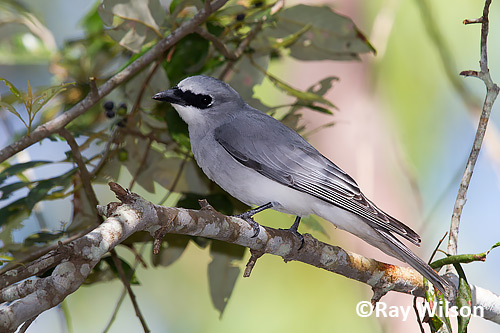
White-bellied Cuckoo-shrike (Coracina papuensis)
Metallic Starlings had only just returned to the area after their winter break and were busy building their nests in a large gum tree in a public park.
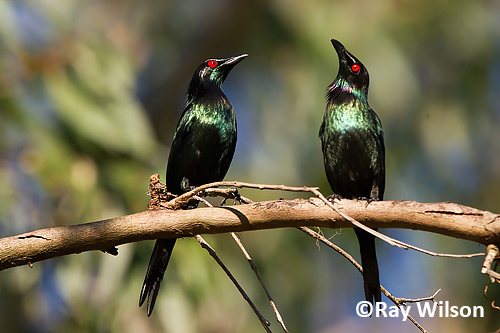
Metallic Starling (Aplonis metallica)
Metallic Starling (Aplonis metallica)
A well-known bower of a Great Bowerbird can be found in the playground of Mount Molloy Primary School and birders are welcome to enter the property when the school is not in session. It couldn't really have picked a less private site for its bower as it surely can't get much peace when the kids come out to play at break-times...the bower is right beside the swings!
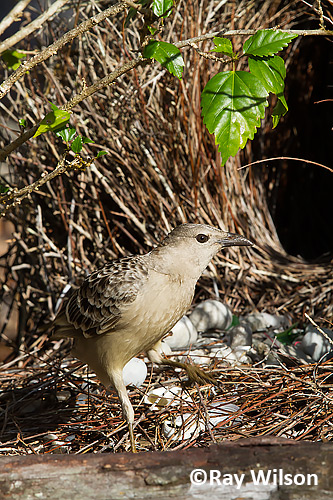
Great Bowerbird (Chlamydera nuchalis) |
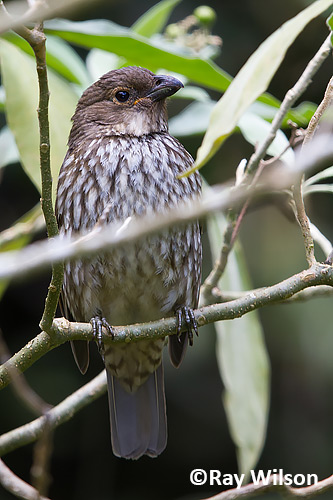
Tooth-billed Bowerbird (Scenopoeetes dentirostris) |
Tooth-billed Bowerbird is a bit more retiring in its habits and the bird shown above right was quietly guarding its favourite fruiting tree at the top of Mount Lewis.
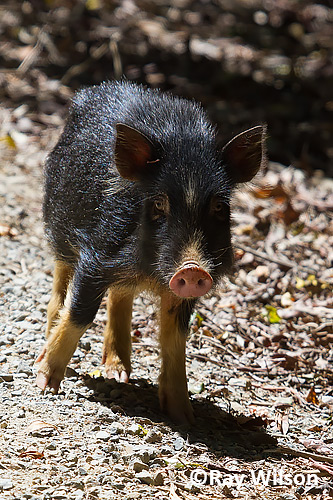
|
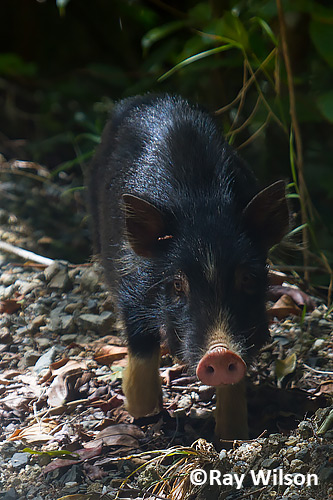
|
Feral Pig
A far less welcome sight on the drive back down the mountain was this little feral pig. Introduced mammals, such as pigs, that escape into the wild can cause havoc with the native wildlife, competing for resources and predating on terrestrial species. Feral pigs have even been implicated in the decline of such large species as Southern Cassowaries in some areas of the York Peninsula after they were found to be destroying nests and eating the cassowary's eggs.
Australian Bustard (Ardeotis australis)
In the dry grasslands to the west of Julatten, Australian Bustards can be found occasionally poking their heads above the tall grasses to check for danger, while Agile Wallabies, the most abundant wallabies in northern Australia, are frequently seen in large numbers around the lawns of houses and public parks in the early morning.
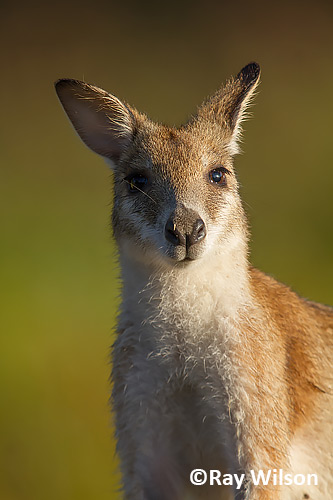
|
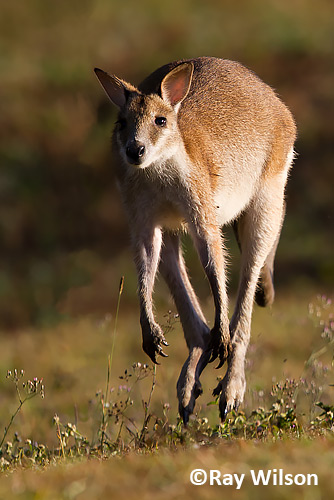
|
Agile Wallaby (Macropus agilis)
Finally, the plant below may look like a fungus, but it is actually a flowering plant. It is a parasite of tree roots and emits a strong mouse-like odour to attract rodents to its tiny white flowers. Honeyeaters can also sometimes be seen visiting the flowers to feed on the nectar.
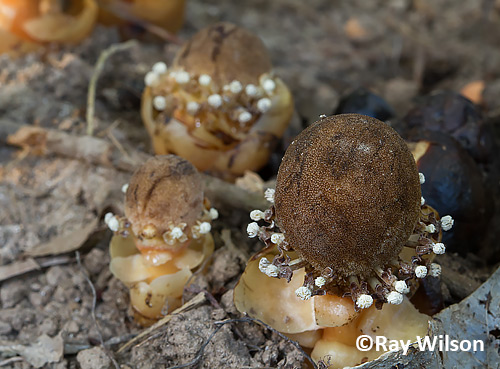
Balanophora (Balanophora fungosa)
Ray Wilson owns the copyright of all images on this site.
They may not be used or copied in any form without prior written permission.
raywilsonphotography@googlemail.com
